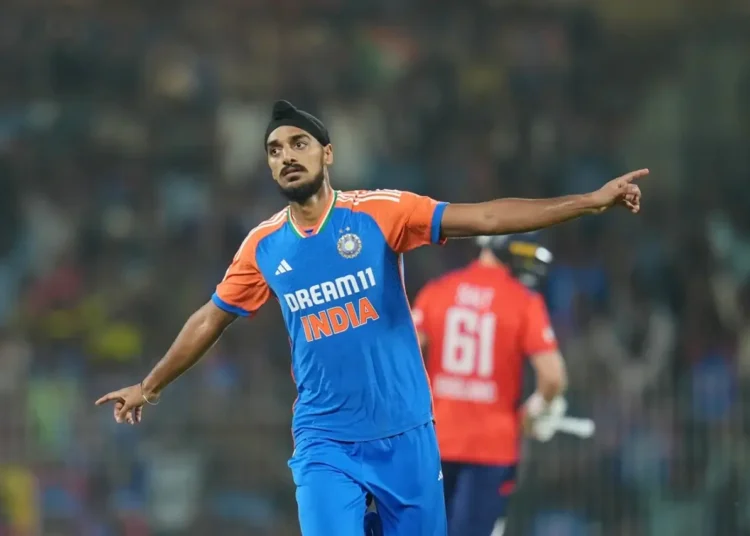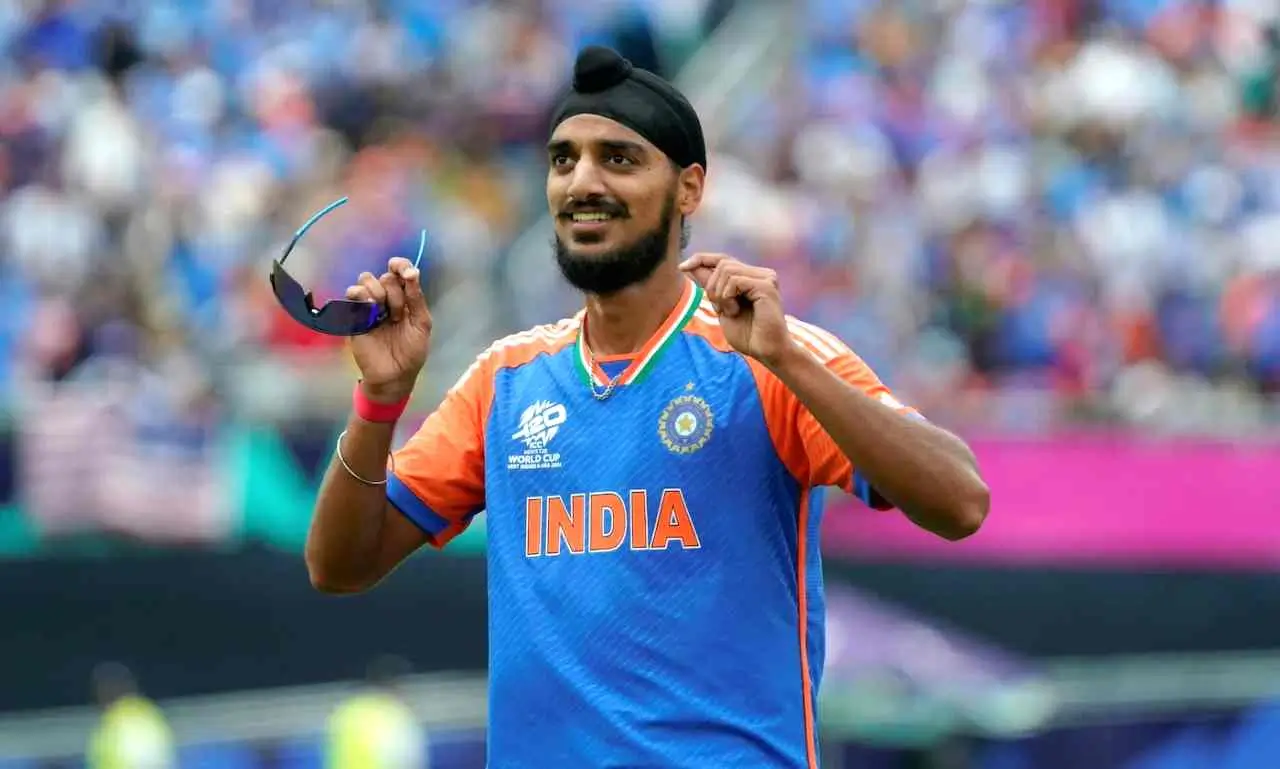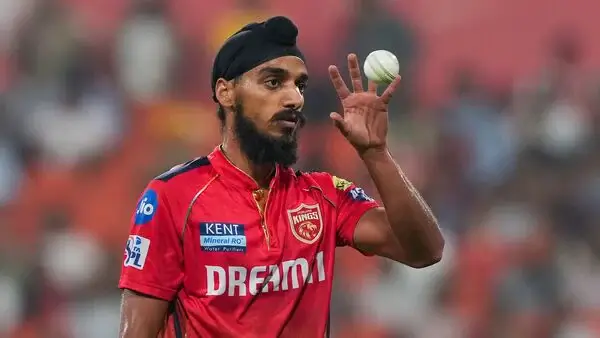Arshdeep Singh is one of India’s most useful pace bowlers. He bowls left-arm seam with late movement. He also owns a deadly yorker and calm death temperament. Many fans ask why he is not in some Asia Cup XIs.
This article explains that selection logic in simple terms. We use pitch traits, team mix and role fit. We also explain why he remains crucial for the T20 World Cup 2026. Finally, we outline his new-ball virtues and death bowling craft as we have seen in IPL for the Punjab and the Indian team.
This is not a critique of his ability or form. It is a pragmatic look at match-up, surface and squad goals. Selection often follows strategy more than mere reputation. Keep reading to see how and why that matters.
Why is Arshdeep not being picked in the Asia Cup — pitch and balance logic?
Dubai pitches often play slower and lower than fans expect. On flat tracks, raw pace can be easier to hit. When seam lacks pronounced movement, spinners become the better wicket option. That is the core pitch logic behind many Asia Cup picks.
India’s current setup offers Jasprit Bumrah as the strike seamer. Alongside him, Hardik Pandya and Shivam Dube supply useful pace overs and batting depth. This combination lets the side bat deep to number eight. With two strong allround pace options, the need for a fourth specialist quick reduces.
India also fields three attacking spinners in many games. Axar Patel, Kuldeep Yadav and Varun Chakravarthy bowl aggressive lines and pressure the middle overs. That trio can choke scoring on slow Dubai decks and control run-rate. When spinners can both attack and contain, selectors often prefer them over extra pace.
So Arshdeep’s omission often comes down to match-up planning and pitch read. Selection is tactical and changeable by match and venue. If conditions swing in favour of seam, his left-arm angle becomes urgent. For now, the team combination and surface reads limit his immediate XI chances.
How the team combination directly limits Arshdeep’s spot?
India values batting depth and flexible overs from the lower middle order. Hardik and Dube lengthen the batting and bowl steady pace. That allows captains to keep three attacking spinners without weakening batting. A fourth specialist quick would then reduce batting depth or alter the spinner mix.
Captains choose overs based on match-ups and tempo, not on names alone. If the toss and pitch call for pace, Arshdeep moves into serious contention immediately. For the Asia Cup in Dubai, the combination of two allrounders and three spinners often makes a fourth quick surplus. This is a tactical omission, not a long-term rejection.
Arshdeep Singh Career Stats
Batting & Fielding
Arshdeep Singh T20 Stats
Batting & Fielding
Why is Arshdeep vital for the T20 World Cup 2026?
Arshdeep brings a valuable left-arm angle to India’s attack. Left-arm seamers change lines and challenge right-hand heavy orders. He began his T20I career with a rare maiden over start. He was also India’s leading wicket-taker in the 2022 T20 World Cup stage.
In tournament cricket, variety and match-ups matter more than single-game form. Arshdeep can open with the new ball, swing early, then return as a death specialist. That dual role gives captains more ways to control phases. In tight knockout games, the ability to change tempo and angle is a big asset.
His IPL record under lights also strengthens his tournament case. Regular exposure to high-pressure finishes hones both bowling skill and game sense. For a global event like the 2026 World Cup, teams need bowlers who can win both early overs and close finishes. Arshdeep fills that two-phase need well.
Match-up advantage and tournament flexibility
Opponents must rethink batting order and left-right combos when a left-armer bowls. That forces changes in field placement and batting strategy. Even if Arshdeep bowls only three or four overs, the disruption helps fellow bowlers. In tournaments, these small tactical edges can decide knockout matches.
Keeping him in the core squad gives selectors flexibility across venues. If conditions suit seam or a specific opponent struggles against left-arm angles, he becomes a go-to. For long tournaments, that flexibility is often more valuable than a single form snapshot.
How does Arshdeep use swing and seam at the start to build pressure?
Arshdeep’s new-ball plan combines fuller lengths with controlled seam presentation. He holds a seam position that invites late movement. At 140kph-plus, he combines pace with the capacity to angle the ball across batters. That balance produces edges and early breakthroughs.
Powerplay dots and tight overs force batters into risky strokes. Arshdeep’s consistent lines create such dot sequences. When batters try to break the shackles, they often play across the line or miss the ball. Those induced mistakes lead to catches and pressure on the batting side.
His early spells for India and returns in franchise cricket show this effect repeatedly. New-ball strikes hand momentum to the bowling unit and ease the middle-over plan. That is why captains like to use him in phase-setting roles.
Early overs plan: control, wickets and tempo setting
In the first six overs, economy and pressure are as crucial as wickets. Arshdeep’s control of length and angle builds this pressure. A disciplined opening spell allows spinners to bowl with defensive fields and attacking angles. So his new-ball craft is strategically as valuable as his wicket tally.
How Arshdeep nails accurate yorkers at the death?
Arshdeep has developed a repeatable yorker release under pressure. He hits the blockhole by repeating release points and wrist position. At pace, these deliveries skid and target the toes. Batters often mis-time or top these balls, creating dot balls and low-risk singles.
He also mixes slower yorkers and cross-seam variations to deceive timing. This blend of predictability (yorker) and surprise (slower) creates mishits. IPL seasons refined this craft, with standout death spells and match-winning yorkers. That is why captains trust him in the final overs.
Death overs execution: patterns that win close games
Death bowling requires nerve and technical repeatability. Arshdeep’s calm and consistent release helps him succeed in tense finishes. He protects small totals and snares wickets in tight chases. Those match moments prove the practical value of his death skills.
How Arshdeep can surprise opponents when included in the XI?
Arshdeep’s biggest edge is his two-phase threat. He can swing new overs and then close with toe-targeting yorkers. That forces opponents to plan for two very different phases in the same match. Batting orders may shift, and routine match-ups can break down under that pressure.
He also creates indirect chances for other bowlers. When batters focus on his yorkers, they are vulnerable to slower balls and cutters. That opens up wickets for spinners and other pacers. So his inclusion lifts the whole bowling unit beyond his personal overs.
Why Punjab Kings rely on Arshdeep as their strike bowler?
Punjab Kings backed Arshdeep from his early IPL days and then retained him. He has delivered match-winning spells, including a 5 for 32. Across IPL seasons, he has honed yorkers and death craft against top batters. This franchise-level pressure sharpens his international readiness.
Franchise trust also reflects a bowler’s ability to perform under heat and expectation. Arshdeep’s IPL numbers and repeatable death plans make him a reliable match finisher. That experience translates well to World Cups and tight international matches.
Conclusion — tactical omission now, strategic asset later
Arshdeep’s limited Asia Cup selection is chiefly tactical. Dubai’s slower decks and India’s spin-friendly mix shape XI choices. With Bumrah, two allround pace options and three attacking spinners, teams often favour spin balance. This reality makes a fourth specialist quick less essential there.
That short-term omission should not be read as a dismissal of his value. For the T20 World Cup 2026, Arshdeep offers a rare left-arm angle, new-ball control and death-yorker precision. His IPL exposure adds pressure-handling experience and match maturity. Keep him in the core pool and pick him when venues or opponents suit his skill set.
Selection is about match-ups, not just names. When conditions favour seam or when tactical match-ups demand left-arm variety, Arshdeep will be an immediate and powerful choice. He remains a strategic asset for India’s tournament plans, both in group phases and knockout fights.








